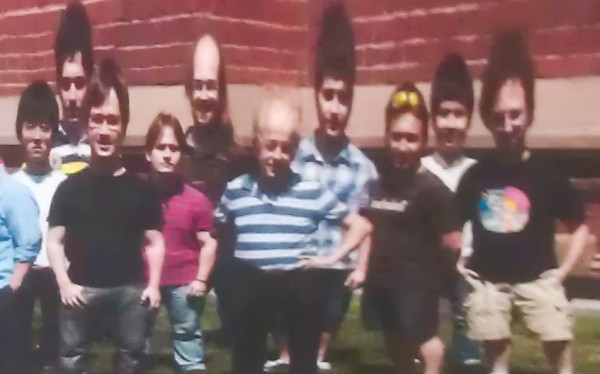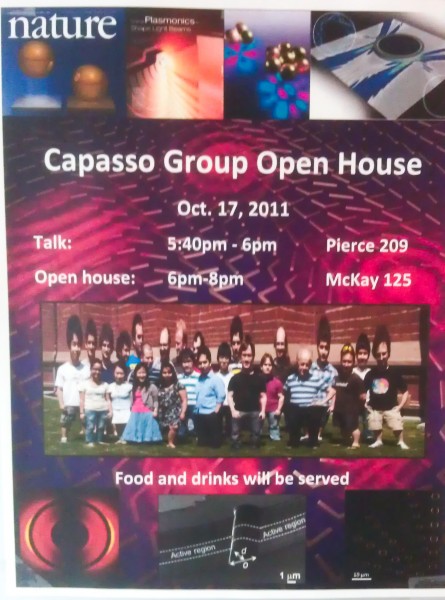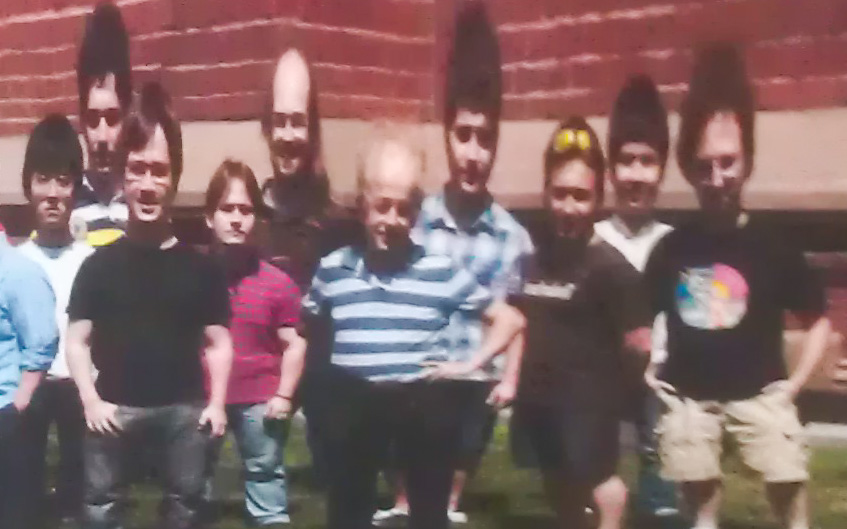
I was expecting courses of the highest quality when I started looking for courses to audit last fall. After two semesters, I am supremely satisfied. The two courses I audited in fall were Introduction to Solid State Physics by Federico Capasso and Solids: Structures and Defects by Frans Spaepen. Two in the spring were Introduction to Soft Matter–Capillarity and Wetting by Ian Morrison and Michelangelo: Precedents, Innovations, and Influence by Christine Smith. They gave me something to anticipate each week (let’s face it, experiments do not work most of the time). Each lecturer has a unique a style, but one thing they all share is the passion they have for their subjects. Or maybe there is something more than just passion, it is the utter enjoyment.
For someone who failed his first physics midterm test in college, a fascination in physics could be lethal, so I was particularly cautious when approaching anything physicsy. I audited Solid State Physics twice when I was in Toronto at two different departments, but I was not convinced that I got it. Capasso’s class was the third time I studied the subject, and I was determined to do it thoroughly. It was the only course that I not only followed the lectures but also did the assignments and took the exams. I got what I was looking for.
In reviewing my notes on the course, I realize that the most enlightening parts are not the content of the subject, but the way he approaches the subject. Two things stand out in this perspective. First, it is the discussion-based lecture style. Capasso would ask questions in the class and made us to discuss. His rationale behind is that “science is discussion”. It was not until later that we realized that some questions he asked were the questions that led to Nobel Prizes. By building that level of thinking into classroom discussion, he sought to inspire at the same time as he taught.
Second, it is his attitude towards maths and the relationship between maths and physics. This is the insight that benefit me the most. My college physics were taught by theoretical physicists, who seem to put a premium on mathematical tricks than on physical reality. That approach did not work for me. Capasso’s guiding principle is to put physical image first, and then leave the maths for us to figure out ourselves. “Everyone can do maths” he would say, “any textbook would do better than me.” He spent most of his lecture time explaining the physics, often graphically, instead of pumping through the maths. This approach worked for me. I became less concerned about checking mathematical errors in the lecture slides and more focused on physical images he draw and explained. The result was that I actually understood more. I realized that most of the time was spent on maths, but most of the understanding came from images that I draw myself.
Capasso is also a fascinating character that produced the most measurable quotes. Through these quotes, one can get a glimpse of his approach to science in general. Here are that ones that I scribbled down during the lectures.
- “I have a lot of respect for equations.”
- “In the absence of information, you start with common sense.” and he is not joking. One of his midterm test actually asks us to use “some common sense” to do an calculation.
- “See the big elephant in the room”.
- “I don’t care about (mathematical) rigor, but sometimes you have to be rigorous.”
- “Lack of curiosity is a sin!”
- On trial solutions, and its frequent use in physics — “why, because physicists are lazy, compared with mathematicians.”
- “Science is discussion” (but not all discussion is science.)
- On why Si has an indirect bandgap — “No simple answer, you have to go through the calculation”.
- On the observation of holes in Hall measurement — “Holes are measured, what we measure is real, it is not just mathematical artifact. If something talks like a duck and walks like a duck, it is a duck.”
- “Density of states in electrons, density of states in phonons, density of states in sausages, as in my native country”. (He was born Italian, with a characteristic ascent on “r”. )
- “The model (for doping in semiconductors) is misleadingly simple.”
- When one student asked him to clarify the question he wanted us to discuss, he said “Nature asks questions in a messy way. so do not act like a lawyer or mathematician who wants a perfectly formulated problem.”
- On different notations of Fermi level from different textbooks: “A matter of taste of what notation you use”
- “When you have a big success, you become brain-dead and conservative.”
- “Make the correct assumption, get the correct conclusion. This is how physics is done”
- “This is a a maths problem. You just need to calculate to convince yourself.”
- “Put down numbers, either measured or calculated is essential. Otherwise everything is in the hot air.”
PS. The image of Capasso was from the group photo in his open house poster. I was amused that the heads of all the members were stretched, understandably to show that all are full of brains.

